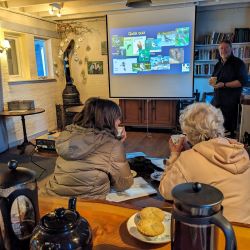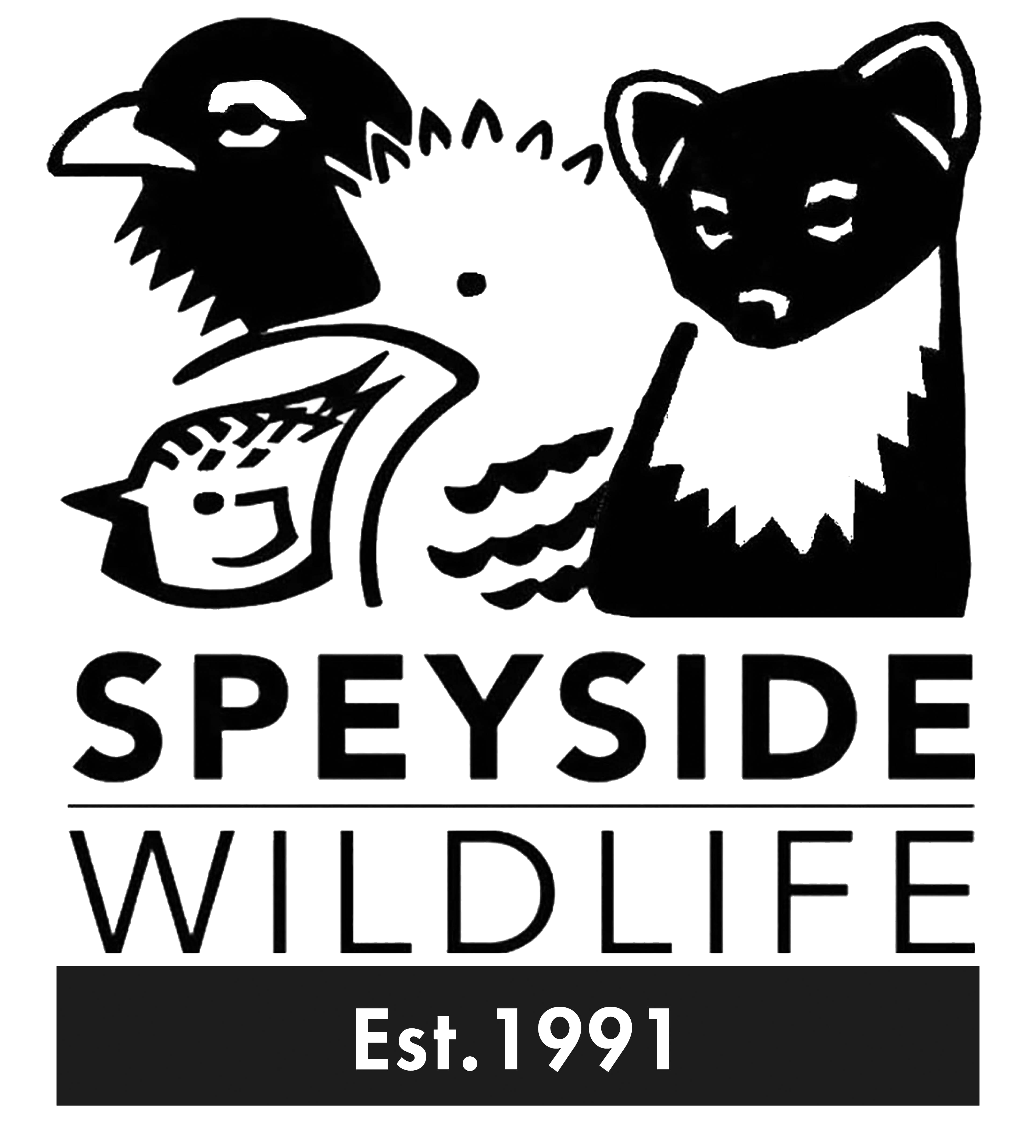Select tab
About
This Lantra-accredited Customised Award is exclusively developed and delivered by a Lantra-approved Training Provider, who meets our quality standards. The course is specifically tailored to meet learners’ needs. For further details about the course content and delivery locations, please contact the Training Provider using the details provided below.
The minimum age to undertake this course is 16.
Our 12-month course was run for the first time in 2017 and following its excellent reception, is due to run again from spring 2026.
Over the year participants attend five study weekends from March 2026-December 2026, with a final exam in April/May 2027. In addition, in their own time, they will progress and practice their skills learnt, producing their own Field Notebook for assessment.
The finer details
Delivery Method
- The course is based near Aviemore in the Cairngorms National Park and runs over a full year. There is an introductory weekend, followed by four study weekends, one in each season.
- Each weekend includes a day in the ‘classroom’ and a day in the 'field' putting into practice what has been covered during the ‘classroom’ day.
- Self-study takes place between these weekends through weekly input via a private Facebook page, with guidance on what to focus on and how to keep notes in Field Notebooks.
- Continual mentoring is available via this Facebook page, to work on tricky species and provide other ID hints and tips - also to ensure the students’ Field Notebooks are on track.
- The assessment is split between an assessment of the students’ field notebooks, an assessment in the ‘field’ in spring, to include recognition of birds by sight, but also by calls and songs and a written test on identification knowledge.
Schedule
- The 2026 course will take place over an introductory weekend in March, plus one study weekend in each of the four periods: Spring, Summer, Autumn, Winter. See Course Information Pack for calendar dates of study weekends.
- Your trainer will be available throughout the 12-month course to discuss any problems or discuss the identification of species etc.
- A list of species students are expected to identify will be provided. You should be able to identify males and females, including any variation in plumage through the year, plus typical bird calls and songs and know what habitat and at what time of year each species is found in the Cairngorms National Park.
- The final assessment will take place in April 2027.
Field Notebooks
Guidance is provided as to what kind of notes would be useful to record – but some degree of flexibility is allowed for personal taste, if it is clear what has been learned. Students may use the notebook provided, their own notebook, or even electronic formats, if it is possible to collect it in for marking. Suggested topics and headings are provided, but how the book is organised is up to individual students.
These field notebooks are a major body of work, capturing what the students have learned and open to other additions that the students wish to add. The notebooks act as a focus for learning and demonstrate students are gaining experience of real birds out in the field – they also act as a reference book in the future. The aim is to make sure the students are gaining experience of wildlife in the field, as this is very different to learning it in the classroom, or from books, or online - evidence of this is what we are looking for in these notebooks. Students should evidence around 50 hours of self-directed study in the field and about 20 hours indoor studying per quarter.
Assessment
Field Notebooks are worth 50% of the final assessment mark. The entries must provide evidence of what the student has learned and what species they can identify. It must include sketches and detailed notes from the days spent in the field in the local area, including what the student has seen and what they have noticed and learned. Evidence of time spent doing home study should also be in their notebooks.
The practical final assessment will take place in April 2027 over the course of a day. Half the day is ‘field’ based, providing the student time in different habitats to identify species seen and heard and talk about what species they might expect at other times of year and how to identify them. An assessor visits habitats with the students, in which each person can demonstrate their ability to identify the birds seen and heard.

Recognised by
Lantra AwardsCourse description:
Who should attend?
What will be covered?
Introductory Weekend
This will cover the structure of the course and key aspects of the Cairngorms National Park including:
- The basic principles of wildlife identification
- The Field Notebook, how to construct it and its importance in showing knowledge and learning
- The Cairngorms’ area – its habitats and species
- Iconic Species – what do visitors most want to see?
- Cairngorms’ wildlife in a Scottish, European and world context
- The assessment
- Wildlife watching – best practice to minimise disturbance
Quarterly Weekends
Each season will have a group of topics relating to the bird species found at that time of year – with resident species split through the year.
- Spring – The focus will be on resident birds and their songs, plus some migrants. Also, how to use the bird identification guide we give students, plus some tricky pairs of birds, some work on habitats and which birds belong in which habitat. Finally, we look at naming feather tracts.
- Summer – Continued work on how to use the field notebooks, breeding species, consolidating, and adding to what was covered in spring, immature birds and starting to look at raptors.
- Autumn – This has a focus on mammals, some tricky pairs of bird species, moult, and its effect on the identification of immature plumages and other changes in plumage, the structure and purpose of different feathers and finally we look at migration.
- Winter – The focus will be on waders, gulls, wildfowl including swans, geese and ducks, winter plumage divers and grebes and what to do to identify a bird you don’t know. We’ll cover mammals in winter, as well as seals and go over the structure of the final assessment.
Courses
| Date | Location | Provider | |
|---|---|---|---|
| 01/03/2026 | Speyside Wildlife |
Search for providers near you
If there are no suitable courses listed above, please fill in the details below and this will display a list of other course providers who also deliver this course.



